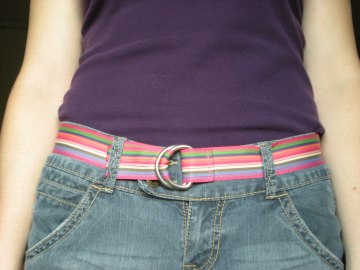I bought asparagus at the Farmer’s Market. Yay, me: buying local. Then I went off the deep end. I foraged in the woods. I ate what I found. And it was scrumptious. But I’m getting a tiny bit ahead of myself.
 I’d been planning a get-together with a friend–we’d agreed on a day, a time, and a coffee shop. Then at the last minute she suggested taking a hike instead. Wild onions are in season, she informed me, so we could collect some while we walked. I was perfectly pleased with the change of plans, little suspecting how I would benefit. But as I hopped out of her truck when she dropped me back at home, she thrust half the afternoon’s gatherings toward me.
I’d been planning a get-together with a friend–we’d agreed on a day, a time, and a coffee shop. Then at the last minute she suggested taking a hike instead. Wild onions are in season, she informed me, so we could collect some while we walked. I was perfectly pleased with the change of plans, little suspecting how I would benefit. But as I hopped out of her truck when she dropped me back at home, she thrust half the afternoon’s gatherings toward me.
“What do I do with them?” I asked, feeling that she, who knew what she was doing, was worthier to enjoy the harvest.
“Toss them in scrambled eggs,” she offered. “Or put them in chicken salad. They’re wonderful sauteed in butter.”
“Ooh, I’m making pot pie this week,” I said, suddenly realizing that this wild vegetable might not be so out of place on my menu.
Her eyes lit up. “Yes; they would be delightful in pot pie!” (To be fair, I’m not sure if she actually said “delightful.” Whatever the adjective, it was a lesser-used one, spoken with such conviction and enthusiasm that I knew I’d be an idiot to miss my chance at experiencing it.)
Even though pot pie was on the menu for the next day, I immediately set about making the filling, just to get the onions into their culinary habitat before…they evaporated? spoiled? I don’t know. They’re just tiny sweet onions, but for me, in those moments after unearthing them, they were magical.

I imagine you can see why. I rinsed them, chopped them, and added them to a gravy.

Those little white lumps are the onions. I’ll include the whole (admittedly loose) recipe at the end of the post. While the gravy thickened, I set about adding some color to the mix.

Those colors, all confettied, went in to complete the pot pie filling, which I then cooled and refrigerated to scoop into ramekins the next day.

Atop the filling I dropped handsful of seasoned bread cubes. I baked the little dinners for twenty minutes at 400, browning the tops and raising the bottoms to a bubbly temperature. Mmm, casserole. (Hubby loves ’em.)

If you want to make your own, here’s the gist–feel free to substitute and improvise:
1. Make a white sauce by melting butter over medium-high heat. (You can use half oil, half butter if you prefer.) Then, in a measure equal to the melted substance, add flour. In other words, if you used 2 Tbs. butter, add 2 Tbs. flour. Whisk until all flour is moist, then cook, stirring occasionally, until the butter is light tan. In my case it turned dark brown because I quit watching. As long as it’s not burned it’ll still taste fine.
2. Deglaze pan with alcohol if you want. I used vermouth, but only because I was out of white wine. If you do this step, cook off the alcohol before proceeding. Give it two or three minutes, stirring. Alternatively, you can deglaze with broth.
3. Add cold milk in a slow stream, whisking as you go. Add a bit at a time, whisk, and let mixture thicken 20 seconds or so to check consistency. (It thickens after everything’s incorporated.) Keep adding milk until the substance is the thickness you like.
4. Add veggies. I add my tough ones first and my soft ones later, so in this recipe it went: onions (for maximum flavor saturation), carrots, and celery. I threw in peppers last and then, as I took the mixture off the heat, I threw in frozen peas.
5. Save filling ’til later–freezes fine–or transfer to a baking dish or dishes. Top with seasoned bread cubes: oldish or dryish bread tossed in a mixture of salt, pepper, olive oil, and Parmesan cheese.
6. Bake until cheese is browned and edges of filling are bubbling. Cool briefly if you’re that patient–otherwise, be careful while you eat! Bon appetit!

























